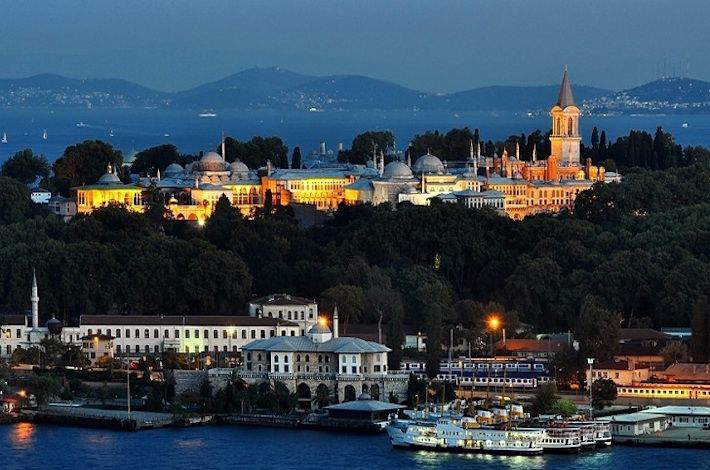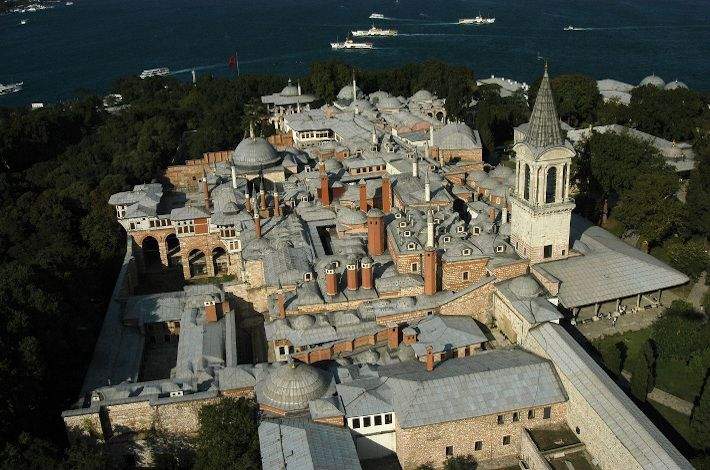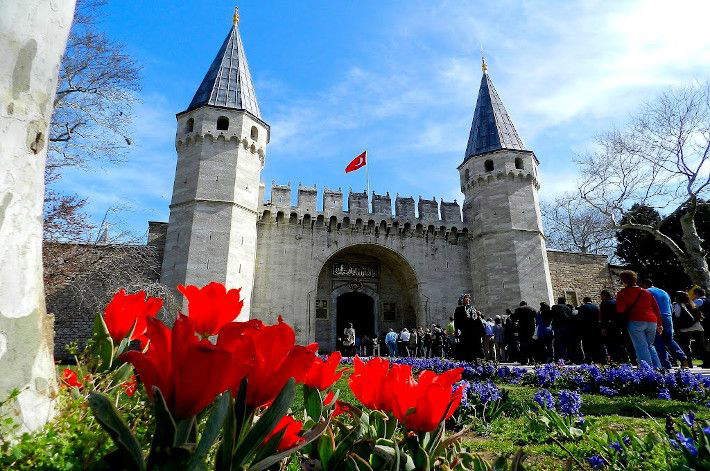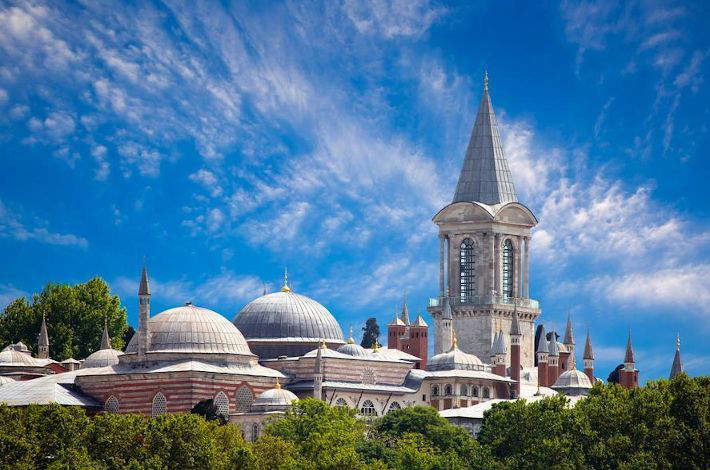Built in the 15th century by Sultan Muhammad II on the Seraglio Promontory overlooking present-day Istanbul, Topkapı Palace is one of Turkey’s most iconic buildings, and today among the most visited museums in Istanbul. Construction of the palace began in 1453 and it immediately became the residence of Muhammad II: at the time, however, Topkapı was not known as such (this name, literally “Gate of the Cannon,” would be given to him only in the 19th century: this was because a century earlier Sultan Ahmet III had a building added with a door protected by two large cannons, which were destroyed during a fire that occurred in 1863), but was known as Yeni Saray (“New Palace,” to distinguish it from the “Old Palace” located in Beyazıt Square). The Topkapı remained the palace of the Ottoman sultans until the nineteenth century (when the seats of power were moved to palaces built along the banks of the Bosphorus: the last ruler to reside in the Topkapı was Mahmut II), and its appearance underwent several changes over the centuries: many sultans wanted to subject the palace to renovations, but the building’s current appearance is still what it had at the end of the sixteenth century.
The Topkapı is not a palace in the style of European ones: it is in fact a very diverse complex of various buildings, courtyards, terraces, towers, galleries, and pavilions rather disorganized in its development, and surrounded by imposing city walls. On the outer circle of walls is the Imperial Gate, which leads to the first of the four courts, the large courtyards around which the palace is developed. The first court is also known as the “Court of the Janissaries” or “Court of Parades”: it was so called because the Janissaries, or the sultan’s guards, gathered there (their functions were similar to those of the praetorians in ancient Rome). The courtyard also contains a church, the Church of St. Irene, the oldest Christian building in Constantinople, which was already present on the Seraglio Promontory at the time when the Topkapı was built, and which at the time of Ottoman rule was used as a weapons and ammunition depot (today it is instead a concert venue). Through another gate, the “Middle Gate,” one arrives at the second court, also known as the “Council Court,” which today is in its 16th-century appearance, dating back to the remodeling of the Suleiman era. It is one of the most sumptuous courts: it is overlooked by the old Topkapı Hospital, the lodgings of the janissaries, the building that housed the Council meetings (the Diwan), the imperial stables, and the palace kitchens (which now house part of the Topkapı’s rich collection of Chinese porcelain, which curiously enough was highly prized by the sultans because according to a rumor it was believed to change color if it came into contact with poisoned food).
 |
| The Topkapı from above |
 |
| The Topkapı from above |
 |
| The Imperial Gate |
 |
| The Tower of Justice |
 |
| Part of the Harem. Photo by Antonio Cali |
The west side of the second court, near the Tower of Justice, leads to one of the most unique rooms in Topkapı, theHarem, which is visited with a separate ticket. The Harem, contrary to what the common imagination fueled by nineteenth-century fantasies might suggest, was not a place where the sultan indulged in pleasures with his concubines, but was a locale subjected to rather strict protocols (the word “harem” literally means “forbidden”). The harem was where the sultan’s concubines resided: here, the women lived, were instructed in the precepts of Islam, received literary and artistic education, and learned to dance, sew, wear makeup, and dress. The best of them could be chosen by the sultan as his brides: according to the precepts of Islam, it was possible for the sultan to have up to a maximum of four wives. The Harem consists of dozens of rooms, the oldest of which date from the time of Murat III in the late 16th century: the buildings that housed the Harems of previous sultans no longer exist.
Through the Gate of Happiness one arrives at the third court, overlooked by the buildings in which the sultan physically resided, his private quarters: among the most important rooms are the hammams, the Library of Ahmet III, the room housing the collection of miniatures and portraits (with thousands of specimens, which are, however, displayed on a rotating basis), the Sacred Cloak Pavilion where Muhammad’s relics (his cloak, which gives the room its name) are kept, the Audience Chamber that was the room where the sultan received his guests and foreign dignitaries, the Conqueror’s Pavilion that housed some luxurious apartments, and the Imperial Treasury Chamber, built by Muhammad II initially as a room used for receptions, and now instead home to the Topkapı’s rich art collections.. In fact, the most precious objects that belonged to the sultans are kept here: jewelry, golden candelabra, daggers, as well as the very famous “Spoonmaker’s Diamond,” one of the five largest diamonds in the world. The tour ends at the fourth court, also known as the "Tulip Garden," a beautiful flower terrace with fountains and overlooking the Golden Horn.
Visiting the Topkapı in detail can take several hours, to which one must also add those to be spent possibly in the queue, since, especially during the seasons most popular with tourists, the Topkapı is one of the most visited monuments in Istanbul. It is therefore always advisable to book a visit in advance. However, a visit to the Topkapı is a must-see step during a stay in Istanbul: entering the sultans’ complex also means getting to know Turkey’s history up close and observing the magnificence of the Ottoman Empire.
 |
| Topkapı Palace, the huge palace of the Ottoman sultans in Istanbul |
Warning: the translation into English of the original Italian article was created using automatic tools. We undertake to review all articles, but we do not guarantee the total absence of inaccuracies in the translation due to the program. You can find the original by clicking on the ITA button. If you find any mistake,please contact us.